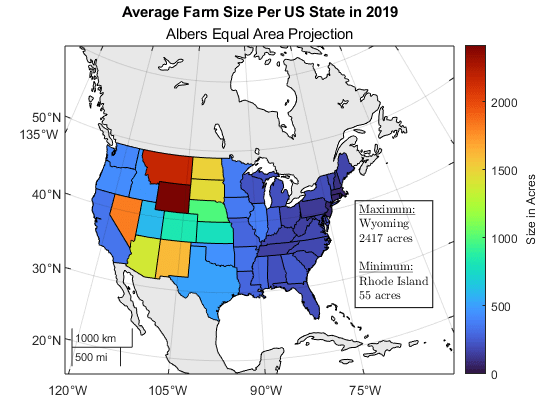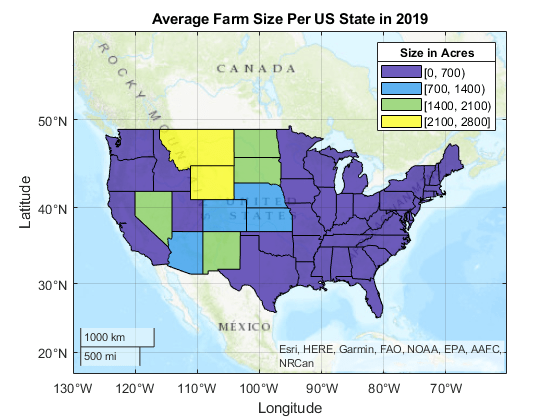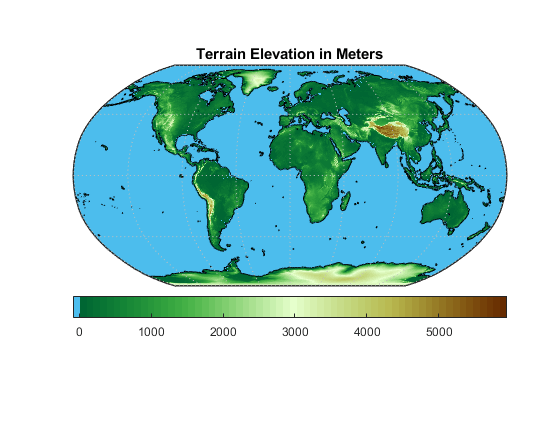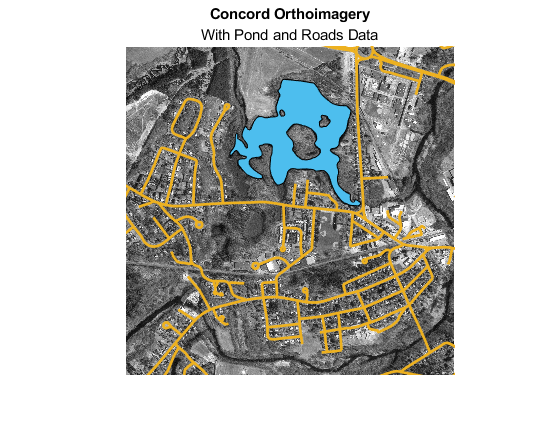Choose a 2-D Map Display
Mapping Toolbox™ provides several options for creating 2-D map displays. Choose a map display based on criteria such as the map projection, the type of data, and interactivity options.
| Sample Goals | Map Display Option | Sample Map | Related Information |
|---|---|---|---|
Projection
Data
Interactivity
| Use a map axes object. (since R2023a)
|
| |
Projection
Data
Interactivity
| Use a geographic axes object.
|
| |
Projection
Data
| Use an
|
| |
Projection
Data
Interactivity
| Use an axes object.
|
|



